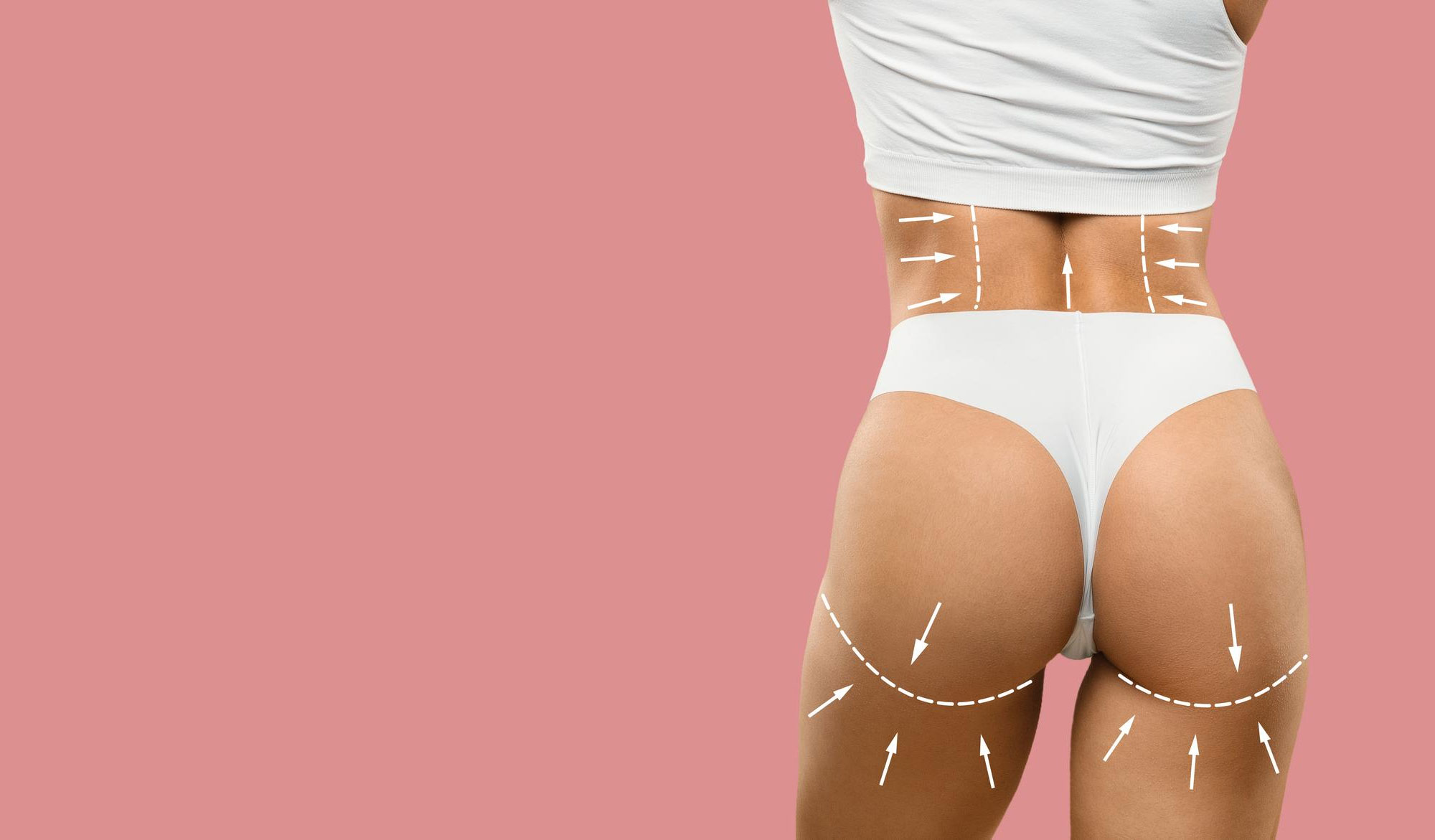What is Labiaplasty and Why is it Performed?
The word labiaplasty is basically a combination of the words "labia" (the inner and outer lips in the female external genitalia) and "plasty" (correction or shaping). This surgery, which is usually performed on the labia minora (inner lips), refers to the surgical reorganization of labial tissue that is overgrown, asymmetrical or uncomfortable in shape.
So why is there a need for such an operation? There are actually multiple reasons for this:
Physical Discomfort: If the labia minora are too large or too long, it can cause friction and irritation when walking, cycling, wearing tight clothing or during sexual intercourse. This can lead to pain, irritation and reduced daily comfort over time.
Aesthetic Concerns: Various perceptions of beauty in society, idealized images from social media and the media can evoke the idea that the external genital area should have a "standard" appearance in many women. Oversized, asymmetrical or sagging inner labia may lead to a loss of self-confidence in some women. Labiaplasty is considered as a procedure to support self-confidence in this sense.
Ease of Hygiene: Long or flaccid labial tissue can make hygiene after urination or during menstruation difficult. This can increase the risk of recurrent infections and reduce quality of life.
Sexual Function: In some people, especially very large labia minora are known to cause pain, irritation or discomfort during intercourse. The reduction of such physical obstacles after surgery can positively affect sexual satisfaction.
In which cases should labiaplasty be considered?
While it may seem that many people consider labiaplasty purely out of concern for "appearance", the factors that lead them to consider this surgical procedure are often complex. Let's take a look at some of the obvious reasons to consider labiaplasty:
Decreased Quality of Daily Life
If you feel uncomfortable when sitting, playing sports or wearing tight pants because of your long labia minora, your daily life is restricted. You can think of it as "the constant loss of comfort when your car has low tires". Just as it is a natural need to put air in the tires, it makes sense to remove a chronically uncomfortable excess tissue.
Recurrent Irritations and Infections
Elongated or folded tissue can create excess moisture and friction in the area. Especially in summer or during intense exercise, sweating and friction increase, which can lead to irritation in the genital area. Recurrent itching, fungal or similar infections can make the problem more pronounced.
Pain or discomfort during sexual intercourse
Sexual health is an important part of overall physical health. If the size or shape of the labia causes pain during sexual intercourse, this can also negatively affect the couple's relationship and the person's self-esteem.
Loss of self-confidence and psychological effects
Issues such as body image and self-esteem have a profound impact on a person's psychological world. Some women are so ashamed of their labia that they may avoid being with their sexual partner, feel uncomfortable in physical contact, or feel embarrassed about their body in general.
If you experience some of these issues frequently and experience severe discomfort in daily life, labiaplasty may be an option for you. Of course, a thorough evaluation, consultation with a specialist and setting realistic expectations are very important when making this decision.
Which methods are used for labiaplasty?
Although "shortening the labia minora" comes to mind most when it comes to labiaplasty, there are actually several different techniques involved. The surgeon chooses the most appropriate method according to the person's anatomy, the degree of the problem and expectations.
Edge Resection (Trim) Technique
In this technique, the excess tissue is removed from the free edge (the very tip) of the lips. In other words, "cutting off the excess from the tip" is done in a way that may sound simple. The advantage is that it is effective in eliminating larger amounts of excess and the surgeon can guide the procedure relatively easily. The disadvantage is that sometimes the natural curved lip edge is lost and can lead to discoloration of the tissue surface. It may be suitable for those who want a flat, notched edge appearance, but may not be the aesthetic choice for those who like a more natural texture fluctuation.
Wedge Resection Technique
In this method, a wedge-shaped piece is taken from the center of the inner lips to shorten them. Thus, the natural edge texture of the lips is largely preserved. The advantage is that the curve of the edges is preserved, giving a more natural appearance and affecting the sensory nerves as little as possible. However, the surgeon must work very meticulously; it requires a meticulous technique to avoid complications such as dehiscence of the suture line.
De-epithelization (Epithelium Removal Only) Technique
In this technique, as if peeling the thin crust off a slice of bread, only the skin surface of the area that feels excessive is removed. The aim is to thin or slightly shorten the lips; however, it is not possible to achieve very large shortening. This method may be preferred in patients with more limited excess. The advantage is that it preserves the natural edge and interferes less with the nerve tissue. The disadvantage is that it is not suitable for a large amount of shrinkage.
Other Techniques and Combinations
In some cases, in addition to the excess tissue, the clitoral area (clitoral hood) may also be excessive. In this case, both labia minora shortening and clitoral hood correction (e.g. "trilobal" or "composite" techniques) are performed in the same operation. Thus, the external genital area has a more holistic aesthetic appearance.
The main goal of each technique is to preserve and even improve function while correcting the aesthetic appearance. In other words, it is essential to remove "unnecessary tissue" and achieve a better result in terms of both appearance and comfort.
How is Labiaplasty Surgery Performed?
This surgery is usually performed under local or general anesthesia. The choice depends on the patient's comfort level, anxiety level and the extent of the operation. The procedure time usually ranges from 30 to 90 minutes. This time may be longer or shorter depending on the technique of the surgery and additional correction requirements.
Preoperative Preparation: During the examination, your doctor will examine the condition of the labia, the degree of excess tissue and other anatomical features. Blood values, anesthesia planning and other surgical risk factors are evaluated. Limiting alcohol and smoking and stopping certain blood thinners may be recommended before the day of surgery.
Surgical Process: Depending on the chosen technique, the excess tissue on the labia minora is marked. The tissues are then removed by cutting (knife, laser or radiofrequency), bleeding is controlled and finally shaped with fine sutures. Some surgeons prefer self-melting suture materials, especially in sensitive areas.
Postoperative Status: Immediately after the procedure, swelling, mild pain and tenderness are expected. You can think of this as "your body's natural reaction to a minor trauma". It is usually possible to get relief for the first few days with rest at home and simple painkillers.
The Recovery Process and What to Pay Attention to?
The recovery period after surgery is at least as important as the surgery decision. Just as the foundation of a house is followed by decoration and maintenance, careful care is essential after labiaplasty.
First Days
During the first 48 hours after surgery, swelling and mild bleeding may occur. Applying ice, cold compresses wrapped in a towel at short intervals (e.g. "20 minutes on and 20 minutes off") will help reduce edema. Using antibiotic creams or ointments recommended by your doctor will prevent possible infections.
Hygiene and Cleaning
Cleanliness of the genital area is very important, especially during the first week. It may be more comfortable to wash with warm water and avoid using tampons or hard toilet paper. Gently drying the area (e.g. with a soft towel or by holding the hair dryer remotely on the lowest heat) can speed healing.
Pain and discomfort
The pain is usually mild and can be controlled with prescription or over-the-counter painkillers. If your pain level increases, it is important to consult your doctor immediately.
Physical Activity
It is recommended to avoid heavy physical exercises, cycling and swimming in the first week. Short low-paced walks are beneficial for blood circulation, but the area should not be overstrained. Most patients can return to desk work or light work within 1-2 weeks.
Sexual Intercourse and Tampon Use
It usually takes 4-6 weeks for the genital tissue to heal completely. During this time, it is recommended that you do not have sexual intercourse and do not use tampons. Your doctor will give you a clearer timing based on the level of recovery at the follow-up visit.
Follow-up appointments
It is very important not to miss the follow-up appointments recommended by the doctor. During these visits, the condition of the stitches, wound healing and possible complications are evaluated. If necessary, stitches may be removed or additional treatments may be applied.
What are the Possible Risks and Complications?
Like any surgical intervention, labiaplasty also involves certain risks. However, these risks are low and are directly related to the frequency of the surgery and the level of experience of the physician. Still, it is useful to be conscious:
Bleeding and Infection: Bleeding at the incision lines or infection at the suture site may occur. Cleaning and antibiotics usually prevent or alleviate these complications.
Excessive or Insufficient Tissue Removal: Sometimes more or less tissue may be removed than desired. This can lead to aesthetic discomfort or functional problems. Correction surgery can be performed if necessary.
Asymmetry Naturally, the human body is not completely symmetrical. Slight asymmetries may remain after surgery. The important thing is that it is at a level that does not cause discomfort in daily life.
Sensory Changes: Temporary or permanent decreased or increased sensitivity may occur in the area. The correct technique and careful surgical approach minimizes this risk.
Suture Separation (Dehissens): Especially with wedge resection method, there may sometimes be an opening in the suture line. This may require a second minor intervention.
How Does Labiaplasty Affect Psychologically and Socially?
Nowadays, plastic surgeries are evaluated not only for the correction of physical appearance, but also for their potential to improve people's self-confidence and mood. In this sense, labiaplasty can help many women relax and feel better.
Increased Self-Confidence: For many years, a woman who feels "different", hesitates to be with her partner or is afraid to wear tight clothes, getting rid of these concerns brings significant psychological relief.
Sexual Satisfaction and Comfort: A pain-free sexual intercourse and being at peace with the body can increase libido and sexual satisfaction.
Social Prejudices: Some cultures or social circles may have prejudices against genital plastic surgery. Although this surgery is considered "arbitrary" or "unnecessary", it should not be forgotten that it is an important intervention that affects the quality of life of the person.
Realism of Expectations: Surgery will not miraculously improve a person's mood in an instant. If there are extensive underlying psychological issues (e.g. body image disturbance, generalized anxiety, depression), these need to be addressed separately. Labiaplasty can be a support, a start or part of a solution, but it does not by itself solve all problems.
What to Expect After Labiaplasty?
In the first weeks after labiaplasty, there may be a more swollen and sensitive appearance than expected. There may even be patients who say "I wish I had not had this surgery". But it is very important to be patient. If you think of your body as a garden, it takes time for the seeds you plant to sprout and blossom. Clearer results can be seen after about 6 weeks, and it can often take several months for the final result to settle.
The result is a labia that is more symmetrical, smaller, or where problems that bother you personally have been resolved. Discussing your expectations clearly with your doctor at the outset will give you a realistic perspective on the results that can be achieved.
What to Consider Before Making a Decision?
As with any surgical intervention, it is important to evaluate the decision for labiaplasty according to the following criteria:
Expert Selection: Choosing a doctor who is experienced in the field and has a good command of female genital surgery greatly affects your results. Listen to the recommendations and be sure to ask any questions you have.
Realistic Expectations: Labiaplasty will not transform you into a completely different person. It is necessary to know the limits of the surgery and act within this framework.
Financial Aspect: Prices may vary between private hospitals, clinics or different specialists. Insurance coverage also varies by country and policy.
Psychological Preparation: It is important to be psychologically as well as physically prepared for surgery. If you have serious body image concerns, it may be wise to seek support from a psychologist or therapist.
Time Planning: In order not to disrupt the healing process, it will be more comfortable to choose a period when you do not have work, travel or important responsibilities.



















